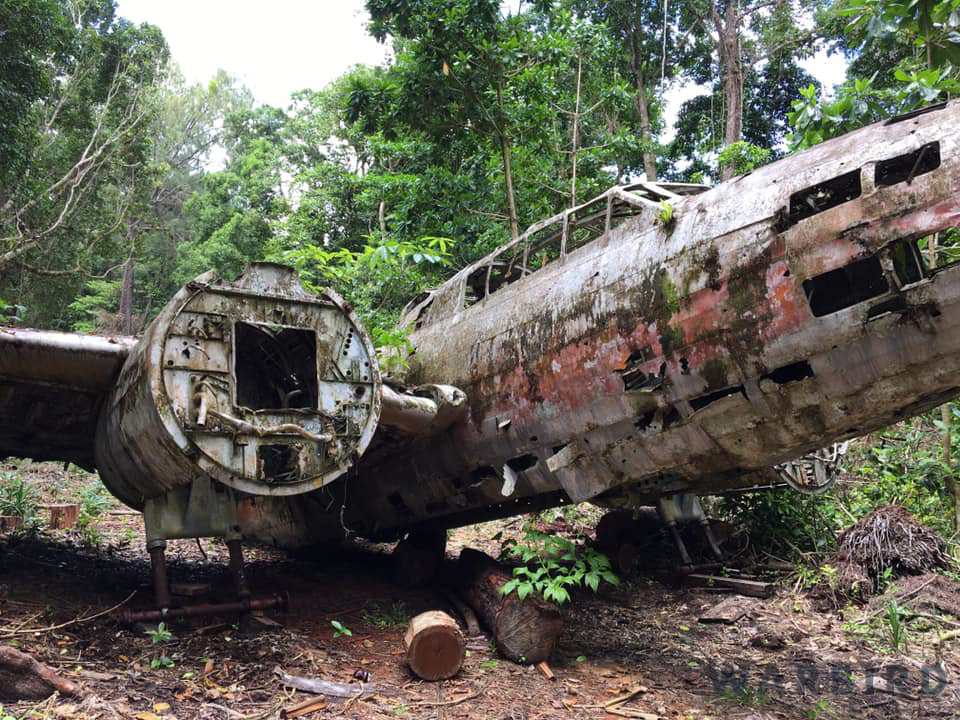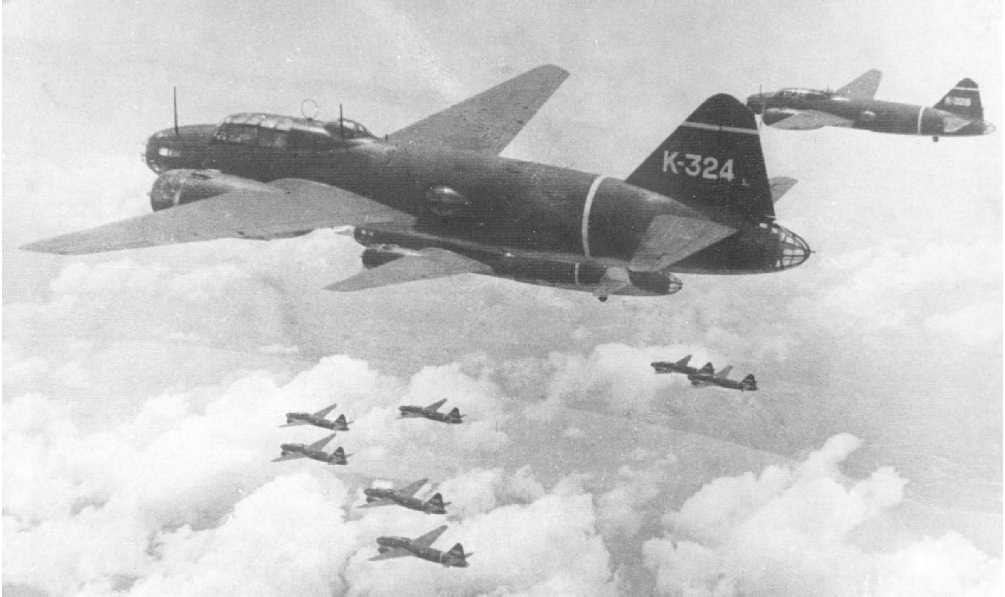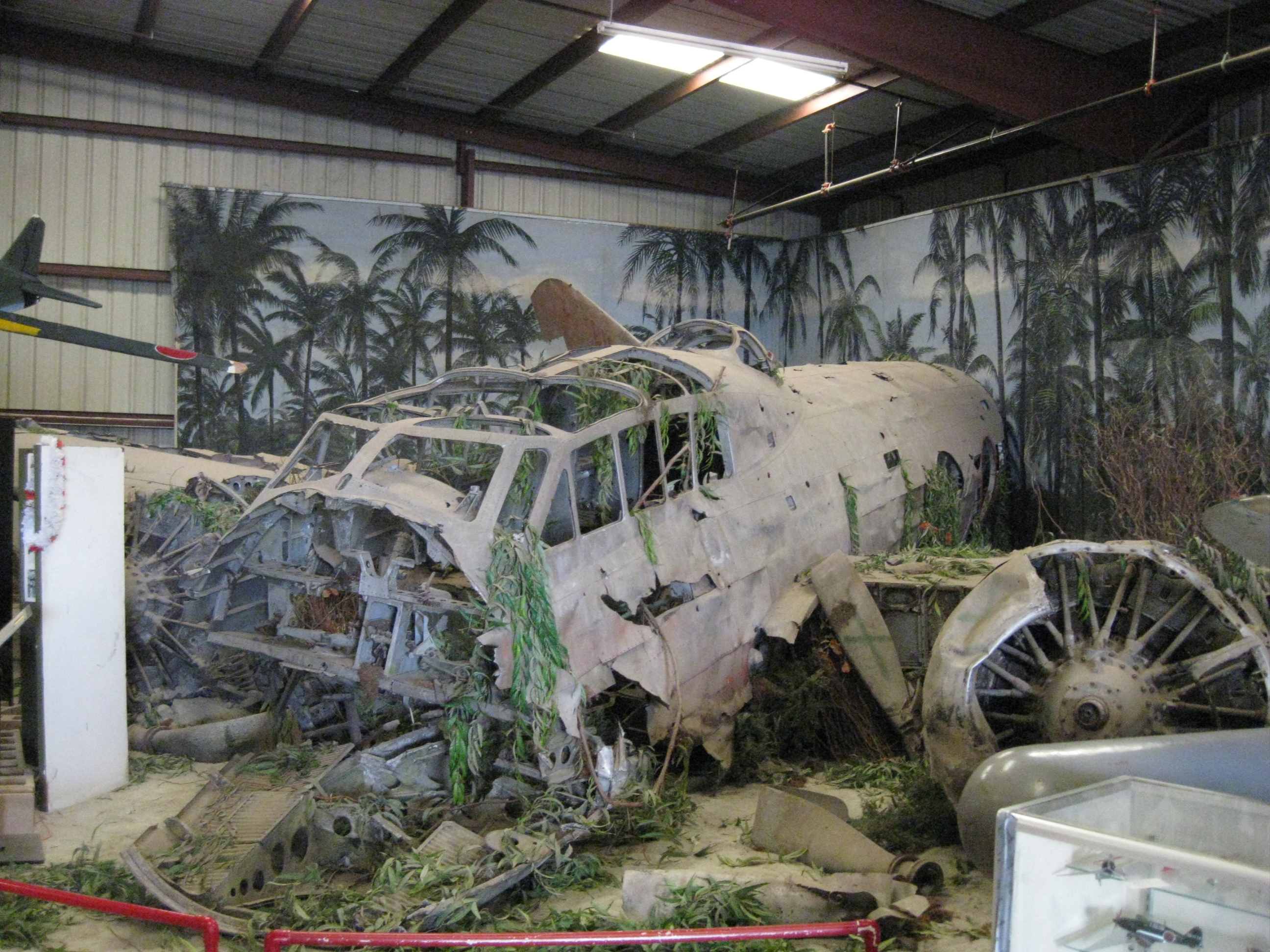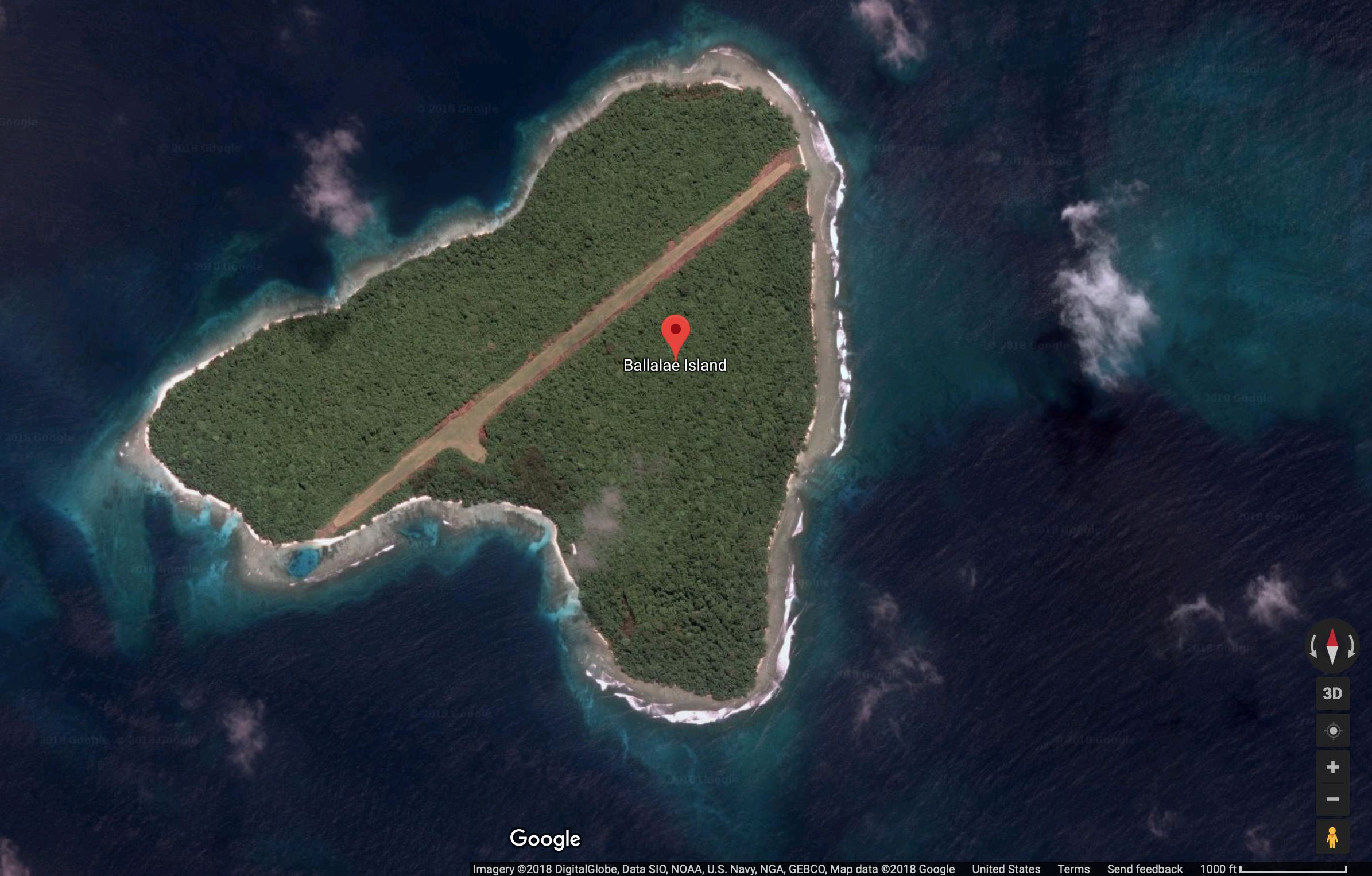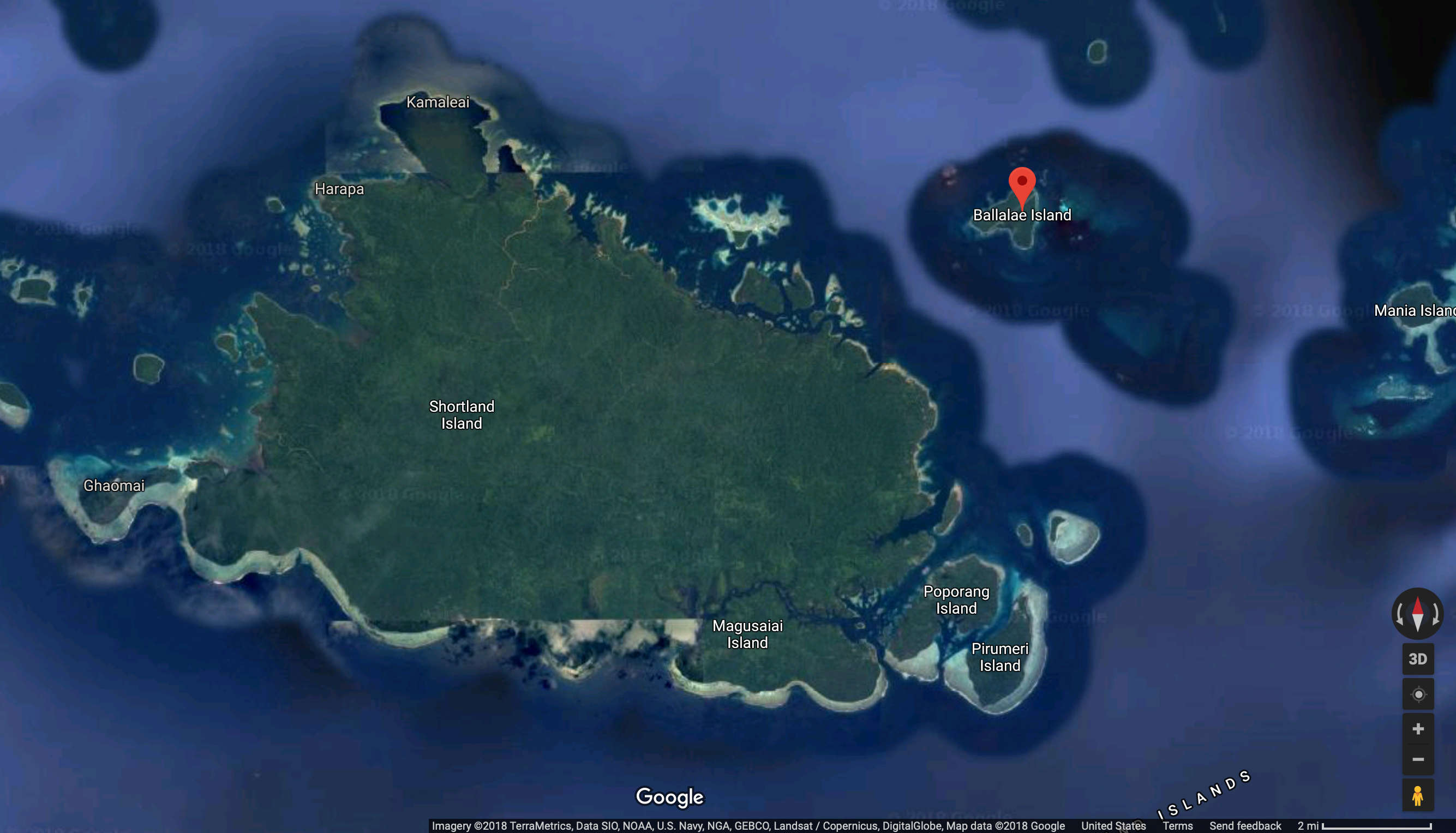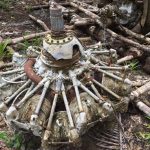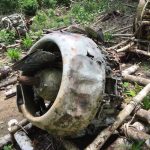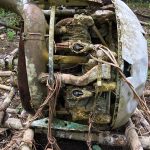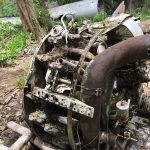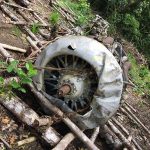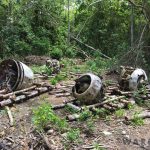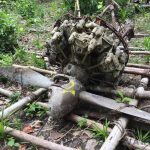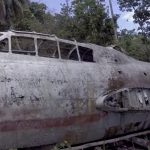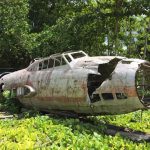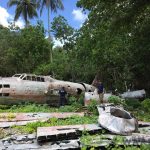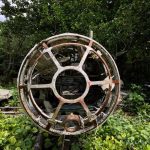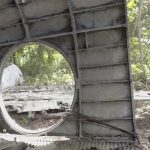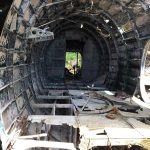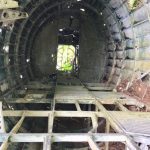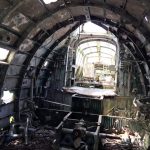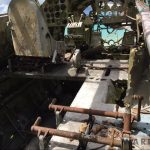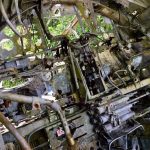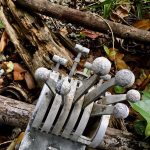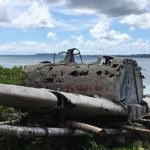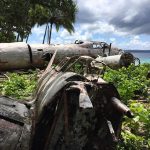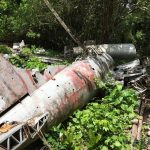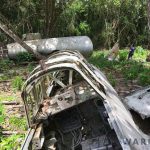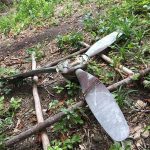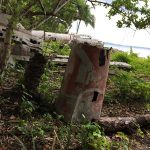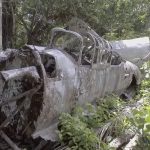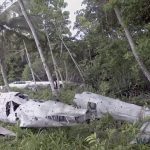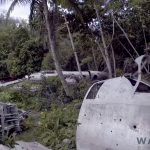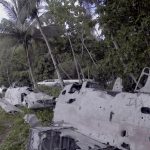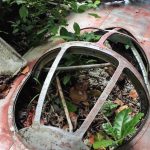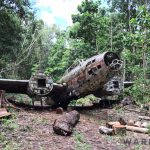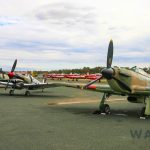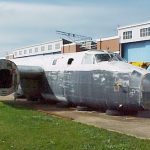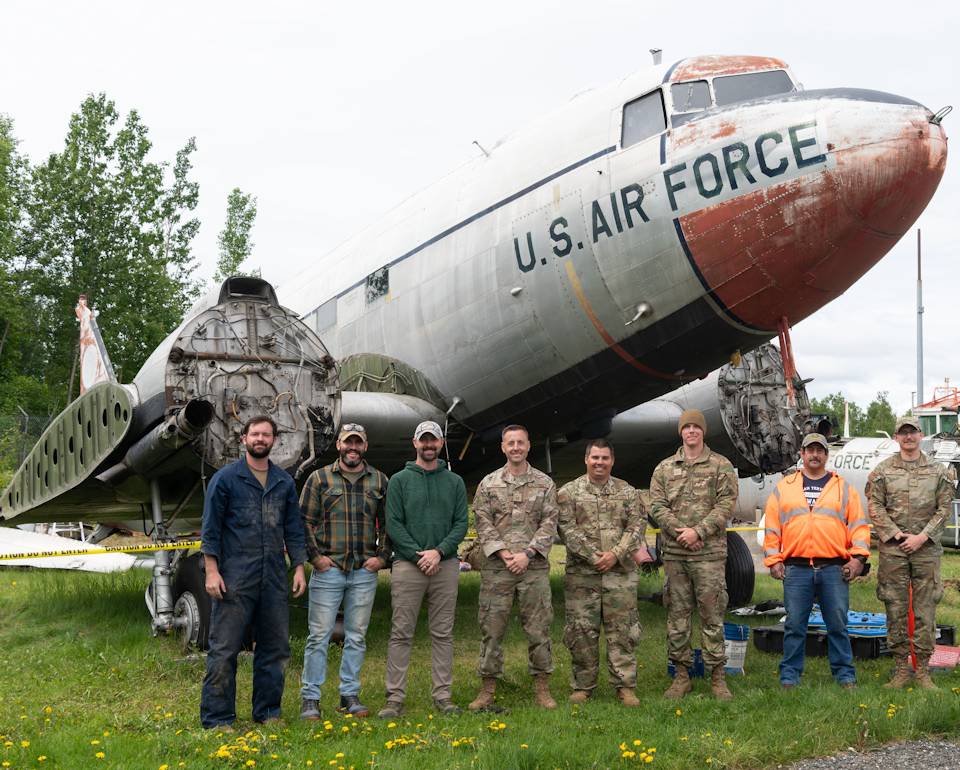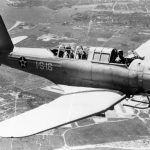It has recently come to light that a number of significant Japanese aircraft wrecks are currently being disassembled for recovery in the South Pacific. Located at the old Imperial Japanese Navy airfield on Balalae Island, part of the Shortland Island Group in the western province of the Solomon Islands, the collection of airframes and components importantly includes two Mitsubishi G4M attack bombers, along with the rear fuselage of another example.
The G4M, better known in the west by its Allied code name, Betty, was a mainstay of the Imperial Japanese Navy’s land-based aerial bombing fleet. They possessed incredible range, although this came with the significant sacrifice of armor, self-sealing fuel tanks and structural toughness. They served many purposes during the war, from medium altitude bomber to torpedo bomber, to transport, including their use as a launch platform for the rocket-propelled Yokosuka Ohka kamikaze planes. Famously, it was while flying in a Mitsubishi G4M that Admiral Isoroku Yamamoto, architect for the attack on Pearl Harbor, lost his life when U.S. Army Air Force P-38 Lightnings intercepted and shot him down on April 18th, 1943 — coincidentally as he was on his way to Balalae.
There are currently no complete examples of the Betty in preservation in the world save for a rather fragile, belly-landed example (G4M1 Model 11 m/n 1280) recovered by Bruce Fenstermaker from Babo Airfield in Indonesia during 1991. This Betty was on display for many years at the Planes of Fame Air Museum in Chino, California. The Flying Heritage & Combat Armor Museum acquired this airframe in November, 2015, and it has been out of public view since that time.
The rarity of this significant aircraft type makes the recovery of the two, far more intact G4Ms on Balalae of great importance. According to PacificWrecks.com, these airframes are G4M1 Model 11 (m/n 2806) and G4M1 Model 11 (m/n 1800) with the rear fuselage coming from a so far unidentified early-model G4M1. Reportedly both No.2806 and No.1800 rolled off the line at Mitsubishi’s Nagoya factory No.3 in Nagoya, Japan during May, 1943. 2806 served as tail code U-321 in the Imperial Japanese Navy with 705 Kokutai (air group). No.1800 is believed to have served with 702 Kokutai, although her tail code is so far unknown.
When WWII ended, dozens of aircraft lay abandoned on Balalae. Given the island’s remoteness, and lack of permanent human settlement, these aircraft remained, pretty much where they sat for decades until the late 1960s when warbird salvagers began surveying the aircraft for possible recovery. Canadian, Bob Diemert was the first in 1968, when he recovered some of the smaller types; a couple of Aichi D3A2 Val dive bombers, and three Mitsubishi A6M Zeros. Others have returned over the years, with a number of Zeros being among the types recovered in a 2007 effort. Now a decade on, the last of the major, relatively intact wrecks remaining on the island are being recovered.
The first rumors of the recovery came in April this year, and obviously stirred up quite a bit of controversy in the Solomons as many islanders are justifiably concerned about being taken advantage of – as has happened previously. There are strict rules regarding the export of war relics from the island archipelago, but from the reporting so far, it appears that the salvagers have been working with the government and the Solomon Islands National Museum to formally negotiate the release of these airframes. There is reportedly a Memorandum of Understanding which includes the refurbishment and return of two aircraft back to the Museum for display. Such agreements have occurred in the past, of course, but once something leaves the islands, enforcing the terms is very difficult to police.
Airframe disassembly began in August this year in the revetments where they had lain since the end of WWII. The recovery team had a pathway cut through the trees leading from the airfield down to the beach. They rigged up crudely fashioned sleds made from tree branches to haul items such as the wings, engines and fuselage sections to the shore for shipment off-island. The forward fuselage and center wing section for one of the Betty bombers had a pair of wheels attached to the landing gear legs so that it could be wheeled along. As of mid-October, everything was sitting by the water’s edge awaiting the transport to the Solomon Islands major port at the nation’s capital city, Honiara on Guadalcanal Island. Images of these artifacts were posted on Facebook a few days ago by Australian, Michael Holmesby; full permission was obtained for re-using them here. We thank him for that privilege. He also uploaded some video of the site at Balalae, which might prove as interesting as the still images presented earlier…
As for their future, should an export permit be formally granted (as is expected), the airframes are likely heading to Australia to a well-known salvager/restorer who is reportedly involved in the recovery effort. Beyond that, it is too soon to say…
Editorial: It should be noted here that there is a great debate about recovering warbird wrecks from the South Pacific. The aircraft in this story have played a major role in Solomon Islands history. The nation also gains income from tourism, with wartime relics being a draw for visitors from across the globe. That being said, Balalae is well off the beaten path for all but the most adventurous of tourists, and there is risk of serious disease for those who do venture there. However, removing these wrecks without proper compensation to the people of the Solomon Islands would be entirely unethical. And there lies the rub. The intrinsic value of these airframes is hard to evaluate. They are priceless in terms of their historical importance, but that is virtually impossible to translate into dollars and cents. Ultimately, it is doubtful that any investor or museum would pay more than a small fraction of what a fully-restored example may command (due to the enormous costs involved in their restoration), but the value of these artifacts in terms of lost tourist dollars to the Solomons may prove greater than this.
From the other perspective, it is easy for many of us in the warbird community to argue that wrecks should all be salvaged, because they will only last a short while longer where they sit due to battering from the elements and vandalism, not to mention those notorious vultures who have shredded so much of what relics had remained for their scrap value. But simply recovering the wrecks for “restoration” can prove as fatal to the artifacts as leaving them where they lie unless measures are taken to conserve and preserve the original material – none of which would ever be sound enough for use in an airworthy restoration. Indeed, with modern 3D scanning techniques available to precisely measure parts electronically without fully disassembling them, there is a viable alternative to the traditional restoration methods where original material is so frequently sacrificed in the process of making patterns for what are essentially new-build airframes. Ideally, original structure could be preserved for static museum display, while data are taken regarding the dimensional details for the reconstruction of an all-new airframe that can still bear a historical identity. Some of the artifacts could then be returned to the islands where they were found and placed under cover in a museum. Even though this is economically viable, and would be of long term benefit to both the islanders and the preservation of historically important artifacts, it seems an unlikely outcome, sadly….
This debate is clearly far from done…







